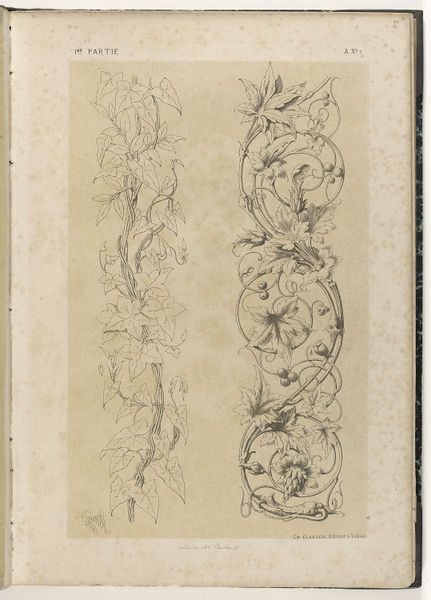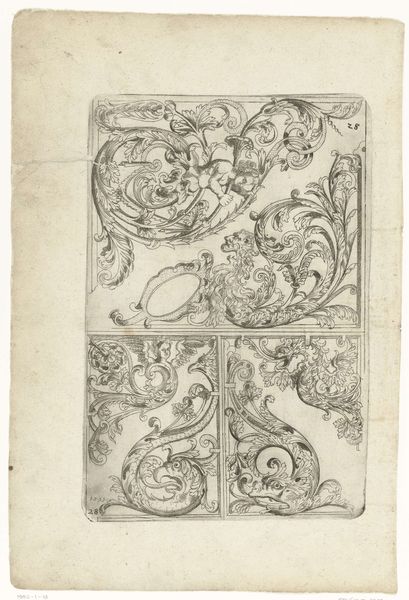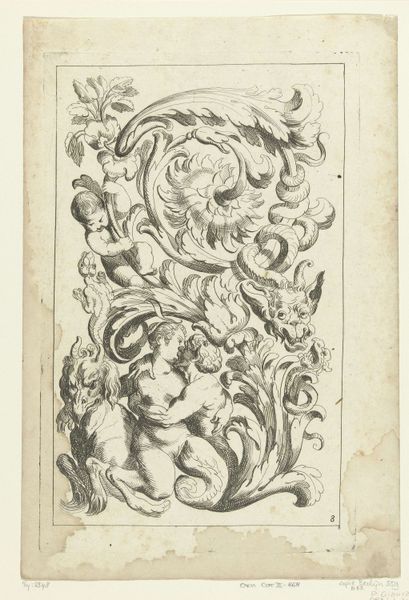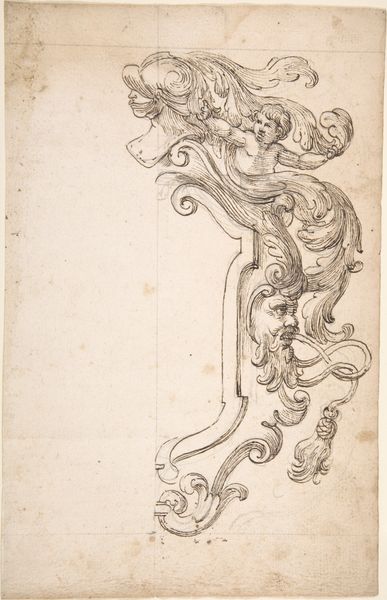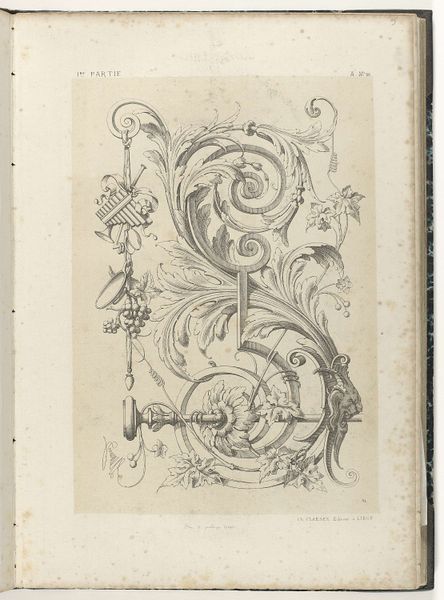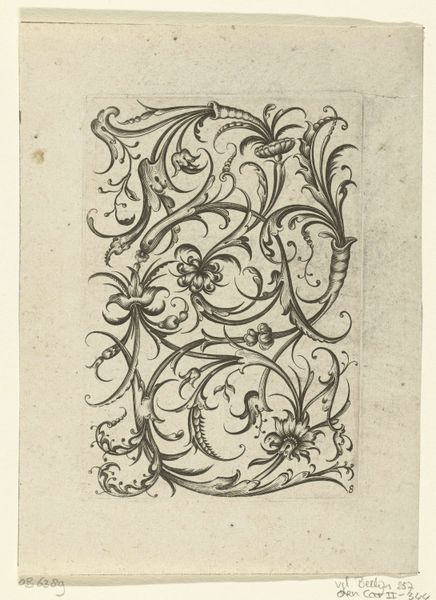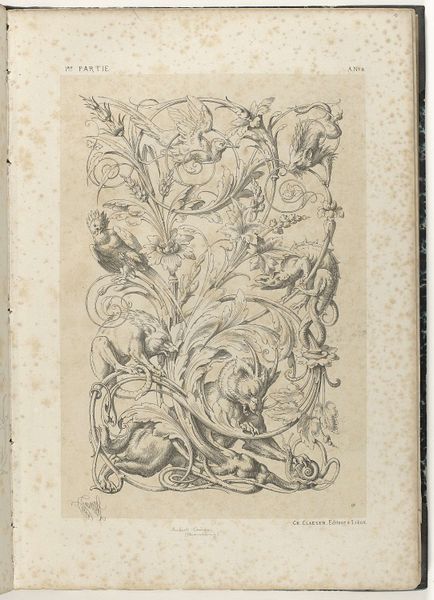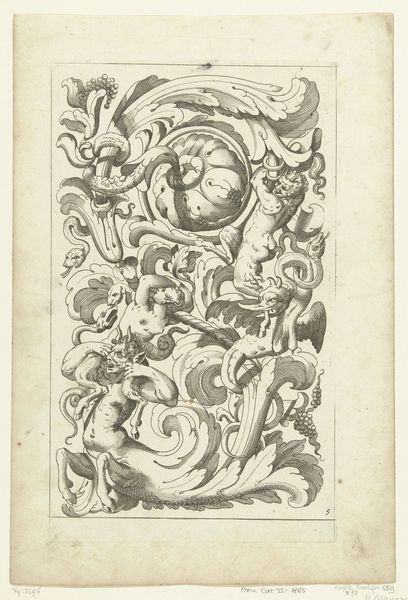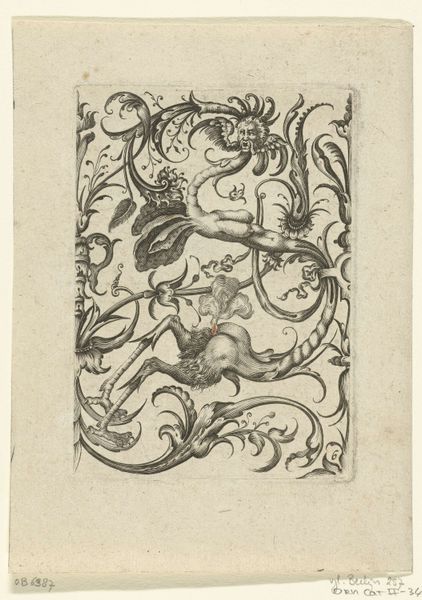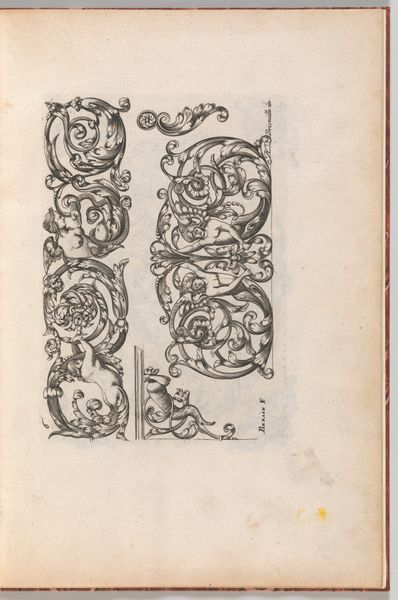
drawing, paper, ink
#
drawing
#
paper
#
ink
#
geometric
#
line
#
decorative-art
Dimensions: height 418 mm, width 290 mm
Copyright: Rijks Museum: Open Domain
Editor: Here we have "Two Motifs of Foliage Tendrils," created in 1866 by Michel Liéenard, using ink on paper. The style is highly decorative, almost like blueprints for ironwork. I am curious, what is the social relevance of creating these kinds of decorative arts? Curator: These designs represent more than just aesthetic appeal; they speak to the 19th century’s industrial ambitions. Leaf tendrils might seem innocuous, but consider the historical context. This was an era defined by mass production and expanding industrial empires. Design motifs like these were crucial for creating new products and styles, thereby fueling consumerism. How might these drawings influence architecture? Editor: Perhaps these served as guides to fabricate ornamentation in iron, adding aesthetic features to urban infrastructure and wealthy homes. Weren’t iron and steel perceived as modern symbols of that time? Curator: Precisely. The choice of foliage motifs taps into a renewed interest in naturalism, fitting well within both public art programs, such as building facades, and privately-commissioned architectural components. Now, do you think there is any connection between industrial growth and natural resources represented here? Editor: It's interesting that as we industrialized, nature was brought in to “soften” things. I hadn't considered how commercially viable nature can be through art! Thank you for opening my eyes to the function and symbolic purpose this drawing might have. Curator: And thank you for raising these crucial points! Recognizing the links between artistic design, industry, and social values enables us to deeply connect with the cultural heritage.
Comments
No comments
Be the first to comment and join the conversation on the ultimate creative platform.
